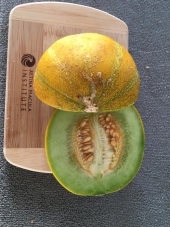
 6
6




Dirty hands + a sweaty handkerchief = hope for the future.
 5
5




Invasive plants are Earth's way of insisting we notice her medicines. Stephen Herrod Buhner
Everyone learns what works by learning what doesn't work. Stephen Herrod Buhner
 3
3




Dirty hands + a sweaty handkerchief = hope for the future.
 1
1








Dirty hands + a sweaty handkerchief = hope for the future.
 2
2




(Reminder to myself) God didn't say, "well said, well planned, and well thought out." He said, "well done."
Nikki's Wishlist




Dirty hands + a sweaty handkerchief = hope for the future.
 2
2








Dirty hands + a sweaty handkerchief = hope for the future.
 3
3




 3
3




"The world is changed by your example, not your opinion." ~ Paulo Coelho
 2
2




 1
1




Dirty hands + a sweaty handkerchief = hope for the future.
 3
3




"When one tugs at a single thing in nature, he finds it attached to the rest of the world."
- John Muir
 1
1




Dirty hands + a sweaty handkerchief = hope for the future.




Dirty hands + a sweaty handkerchief = hope for the future.




Dirty hands + a sweaty handkerchief = hope for the future.
 2
2




Dirty hands + a sweaty handkerchief = hope for the future.




Dirty hands + a sweaty handkerchief = hope for the future.
 1
1








Dirty hands + a sweaty handkerchief = hope for the future.
 2
2




Jenny Wright wrote:We are in the PNW and it's very hard to grow a sweet melon that actually ripens because often our summers aren't hot enough. But we have had success with Sakata Sweet. It is about the size of a large lemon cucumber and it tastes like a cucumber if you pick it too soon. But when they are ripe, they taste like a honeydew melon. They will actually be ripe and sweet by August even when we have a cool summer with many days in the 60s.




Dirty hands + a sweaty handkerchief = hope for the future.
 2
2




It is a small variety of melon, around the size of a softball. It has flesh similar to most cantaloupes, but with a distinct and more intense aroma, and a more pink hue. It originated in the Charentes region of France, and is most associated with the Provençal area around the town of Cavaillon. Most true Charentais melons are grown in and around this region, and are almost exclusively available in France, owing to the fact that their thin skin and soft flesh does not do well in shipping. Hybrids of this variety are widely grown, they are generally crosses with North American cantaloupes for better shipping characteristics and larger size.
Love is the only resource that grows the more you use it.
David Brower




Dirty hands + a sweaty handkerchief = hope for the future.
 1
1




Love is the only resource that grows the more you use it.
David Brower




Dirty hands + a sweaty handkerchief = hope for the future.




Dirty hands + a sweaty handkerchief = hope for the future.
 2
2




 3
3




Dirty hands + a sweaty handkerchief = hope for the future.





|
Don't count your weasels before they've popped. And now for a mulberry bush related tiny ad:
The new permaculture playing cards kickstarter is now live!
https://www.kickstarter.com/projects/paulwheaton/garden-cards
|




